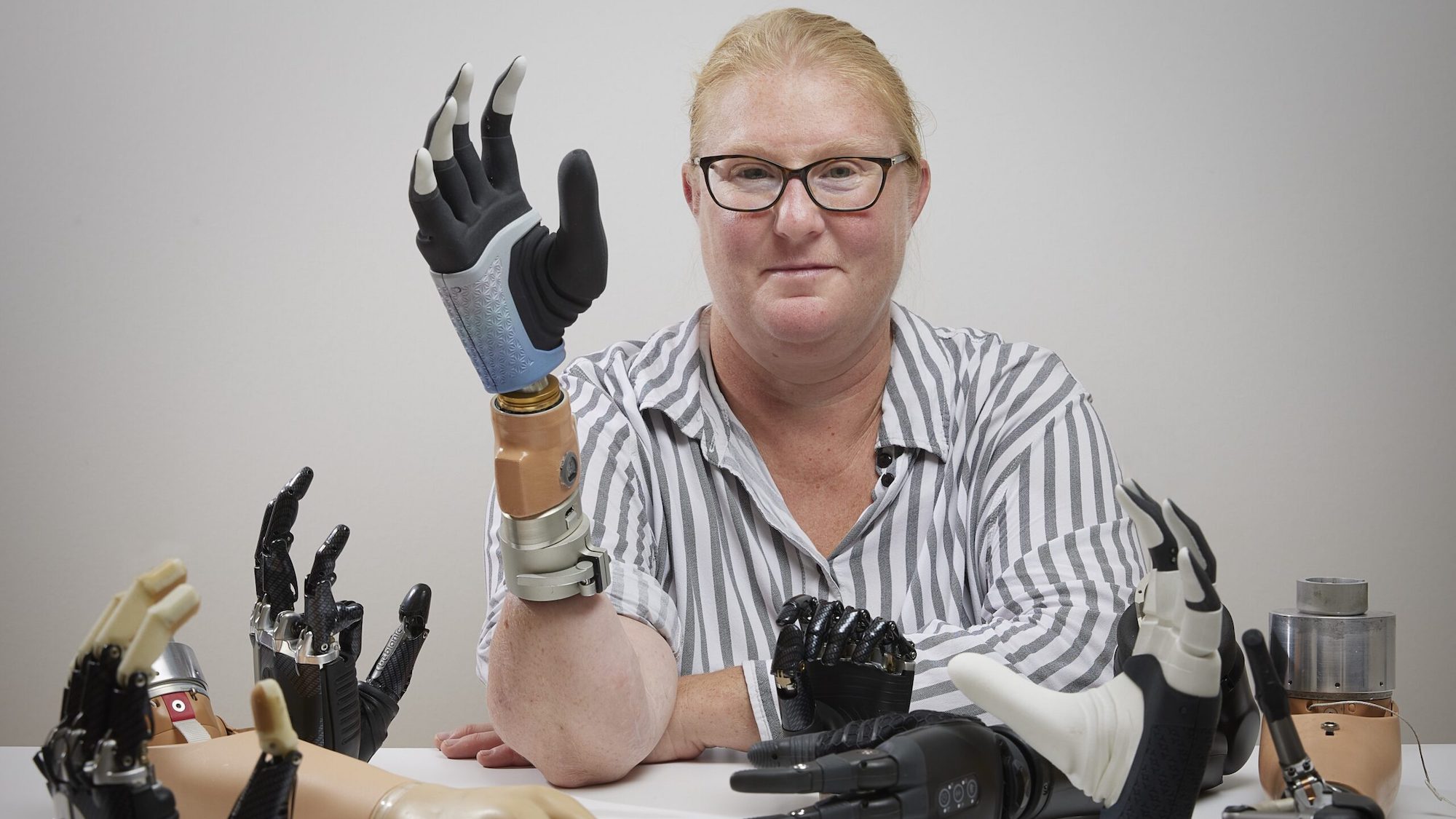

Adjusting to prosthetic limbs isn’t as simple as merely finding one that fits your particular body type and needs. Physical control and accuracy are major issues despite proper attachment, and sometimes patients’ bodies reject even the most high-end options available. Such was repeatedly the case for a Swedish patient after losing her right arm in a farming accident over two decades ago. For years, the woman suffered from severe pain and stress issues, likening the sensation to “constantly [having] my hand in a meat grinder.”
Phantom pain is an unfortunately common affliction for amputees, and is believed to originate from nervous system signal confusions between the spinal cord and brain. Although a body part is amputated, the peripheral nerve endings remain connected to the brain, and can thus misread that information as pain.
[Related: We’re surprisingly good at surviving amputations.]
With a new, major breakthrough in prosthetics, however, her severe phantom pains are dramatically alleviated thanks to an artificial arm built on titanium-fused bone tissue alongside rearranged nerves and muscles. As detailed in a new study published via Science Robotics, the remarkable advancements could provide a potential blueprint for many other amputees to adopt such technology in the coming years.
The patient’s procedure started in 2018 when she volunteered to test a new kind of bionic arm designed by a multidisciplinary team of engineers and surgeons led by Max Ortiz Catalan, head of neural prosthetics research at Australia’s Bionics Institute and founder of the Center for Bionics and Pain Research. Using osseointegration, a process infusing titanium into bone tissue to provide a strong mechanical connection, the team was able to attach their prototype to the remaining portion of her right limb.
Accomplishing even this step proved especially difficult because of the need to precisely align the volunteer’s radius and ulna. The team also needed to account for the small amount of space available to house the system’s components. Meanwhile, the limb’s nerves and muscles needed rearrangement to better direct the patient’s neurological motor control information into the prosthetic attachment.
“By combining osseointegration with reconstructive surgery, implanted electrodes, and AI, we can restore human function in an unprecedented way,” Rickard Brånemark, an MIT research affiliate and associate professor at Gothenburg University who oversaw the surgery, said via an update from the Bionics Institute. “The below elbow amputation level has particular challenges, and the level of functionality achieved marks an important milestone for the field of advanced extremity reconstructions as a whole.”
The patient said her breakthrough prosthetic can be comfortably worn all day, is highly integrated with her body, and has even relieved her chronic pain. According to Catalan, this reduction can be attributed to the team’s “integrated surgical and engineering approach” that allows [her] to use “somewhat the same neural resources” as she once did for her biological hand.
“I have better control over my prosthesis, but above all, my pain has decreased,” the patient explained. “Today, I need much less medication.”
